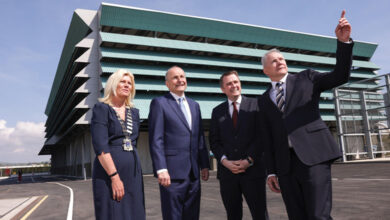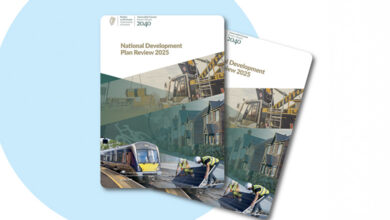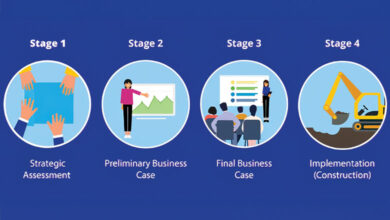Water capital projects

Currently, alongside the National Leakage Reduction Programme, there are several major water and wastewater projects being undertaken by Irish Water across Ireland.
Each day, Ireland loses 40 per cent of its treated water through leaks. These leaks can be difficult to detect among a vast and ageing pipe network. In cooperation with local authorities, the National Leakage Reduction programme is aimed at fixing 1,500 leaks each month to deliver a more reliable water supply, improve water quality, reduce high levels of leakage, and create new, individual supply connections. While the national leakage rate was 46 per cent in 2018, that is set to be reduced to 38 per cent by the end of 2021, saving 166 million litres of water each day.
The Cork Lower Harbour Main Drainage project is intended to provide enhanced wastewater treatment by establishing the new wastewater treatment plant (WwTP) at Shanbally, County Cork (operational since 2016), as well as repairing and expanding the sewer network to connect additional harbour areas to this plant. While in 2015 the equivalent of 40,000 wheelie bins of raw sewage was discharged into Cork harbour each day, this figure has been reduced to 10,000.
Since 2014, Irish Water has built new wastewater infrastructure across 16 towns and villages, eliminating half of the total raw sewage discharged into Ireland’s marine environment each day. With an objective of eliminating the remaining half, Irish Water has committed to the construction of wastewater treatment plants and network infrastructure to adequately treat wastewater before it is safely discharged. As such, having completed projects in counties Cork, Donegal, Dublin, Galway, Kerry, Mayo and Waterford, there are a significant number of projects in the pipeline in counties Clare, Cork, Donegal, Dublin, Galway, Limerick, Louth, Mayo, Wexford and Wicklow.
Currently, the Ringsend Wastewater Treatment Plant provides for over 40 per cent of Ireland’s wastewater treatment capacity. However, the plant is currently overloaded and in contravention of the EU’s Urban Wastewater Treatment Directive. As such, a major upgrade to the Ringsend WwTP is underway. Ultimately, by 2025, the project is intended to deliver the capacity to treat wastewater for an equivalent of 2.4 million people while meeting standards set by the Urban Wastewater Treatment Directive. The four key elements of the project are: providing additional secondary treatment capacity with nutrient reduction; upgrading 24 existing secondary treatment tanks; providing a new phosphorous recovery process; and expanding the plant’s sludge treatment facilities.
The existing Lee Road Water Treatment Plant (WTP) provides around 70 per cent of Cork city’s treated water supply. With an investment of €40 million, the Lee Road WTP project will upgrade facilities. Construction of a new WTP on the existing site is underway and once completed will safeguard Cork’s water supply.
The total wastewater generated in the Greater Dublin Area (GDA) is projected to increase by over 50 per cent by 2050. As such, the Greater Dublin Drainage (GDD) project will develop a new regional WwTP and associated infrastructure to serve the GDA. Once operational the GDD project will have the capacity to provide wastewater treatment for the equivalent of 500,000 people.
The Environmental Protection Agency (EPA) has identified Arklow as an area in which untreated wastewater is being directly discharged in the Avoca River. As such, the objectives of the Arklow Wastewater Treatment Plant project are: stopping the discharge of untreated wastewater in the Avoca River; providing a WwTP compliant with all legislative standards; and improving the water quality of the Avoca River.





